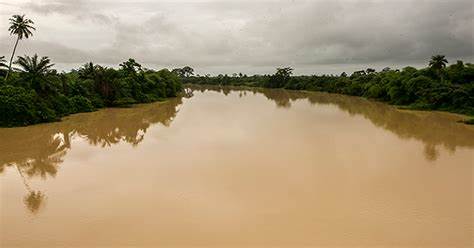Ghana, known for its rich natural resources, is facing a severe challenge due to illegal small-scale mining, commonly referred to as “galamsey.” This practice has escalated in recent years, posing significant environmental threats, particularly the pollution of water bodies. As communities grapple with the ramifications of this unregulated mining, the impact on both the ecosystem and public health is becoming increasingly concerning.
Understanding Galamsey
Galamsey, a term derived from the English phrase “gathering of salt,” refers to the informal and illegal mining of gold and other minerals. While small-scale mining is legal in Ghana under certain regulations, many operations bypass these laws, leading to rampant environmental degradation. The allure of quick profits has drawn thousands of individuals, often leading to unsafe practices and a disregard for the ecological consequences.
Water Pollution: A Growing Crisis

One of the most alarming consequences of galamsey is the pollution of water bodies. Mining operations often use toxic chemicals such as mercury and cyanide to extract gold. These substances can leach into nearby rivers, streams, and lakes, contaminating water sources that communities rely on for drinking, irrigation, and fishing.
- Chemical Contamination: The use of mercury, a common practice in gold extraction, poses severe health risks. When released into water bodies, mercury accumulates in fish and can enter the human food chain. This poses significant risks to the health of local populations, leading to neurological disorders and other health complications.
- Sedimentation: The mining process often involves clearing vegetation and digging up soil, which increases sediment runoff into rivers. This sedimentation can suffocate aquatic life, disrupt habitats, and impair the quality of water for drinking and agriculture.
- Impact on Local Communities: Many communities near mining sites have reported deteriorating water quality. Residents often find their water sources discolored, foul-smelling, and unsafe for consumption. This has led to rising health concerns, as families are forced to seek alternative sources of clean water, sometimes at great distances.
Government Response and Challenges
The Ghanaian government has recognized the threat posed by galamsey and has taken steps to address the issue. Initiatives include crackdowns on illegal mining activities, public awareness campaigns, and stricter enforcement of existing regulations. However, these efforts have met with mixed success.
- Enforcement Difficulties: Despite laws prohibiting illegal mining, enforcement remains a challenge. Corruption, inadequate resources, and the sheer scale of galamsey operations hinder effective action. Many illegal miners operate in remote areas, making it difficult for authorities to monitor and control activities.
- Community Involvement: Efforts to combat galamsey must involve local communities. Many individuals depend on mining for their livelihoods, and without alternative economic opportunities, they may continue to engage in illegal practices. Sustainable development initiatives that provide training and resources for alternative livelihoods are essential to address the root causes of galamsey.
The Way Forward
Addressing the galamsey menace, particularly the pollution of water bodies, requires a multifaceted approach:
- Stricter Regulation and Enforcement: Strengthening laws and ensuring their enforcement can help deter illegal mining activities. Authorities must collaborate with local communities to monitor mining sites and take action against violators.
- Community Engagement and Education: Educating communities about the dangers of galamsey and the importance of protecting water resources is crucial. Involving locals in decision-making processes can foster a sense of ownership and responsibility for environmental stewardship.
- Alternative Livelihood Programs: Developing alternative economic opportunities, such as agriculture, eco-tourism, and sustainable businesses, can provide communities with viable options outside of illegal mining.
- Restoration Efforts: Cleaning up polluted water bodies and restoring damaged ecosystems is vital for reviving the environment. Collaborative efforts between the government, NGOs, and communities can facilitate rehabilitation projects aimed at restoring the health of rivers and lakes.
Conclusion

The galamsey menace in Ghana poses a grave threat to water bodies and, by extension, public health and livelihoods. Addressing this issue requires a comprehensive strategy that balances enforcement, community engagement, and sustainable development. As Ghana moves forward, the protection of its water resources will be crucial not only for environmental health but also for the well-being of its people. Ensuring clean water for future generations is an imperative that demands urgent attention and action from all stakeholders.


